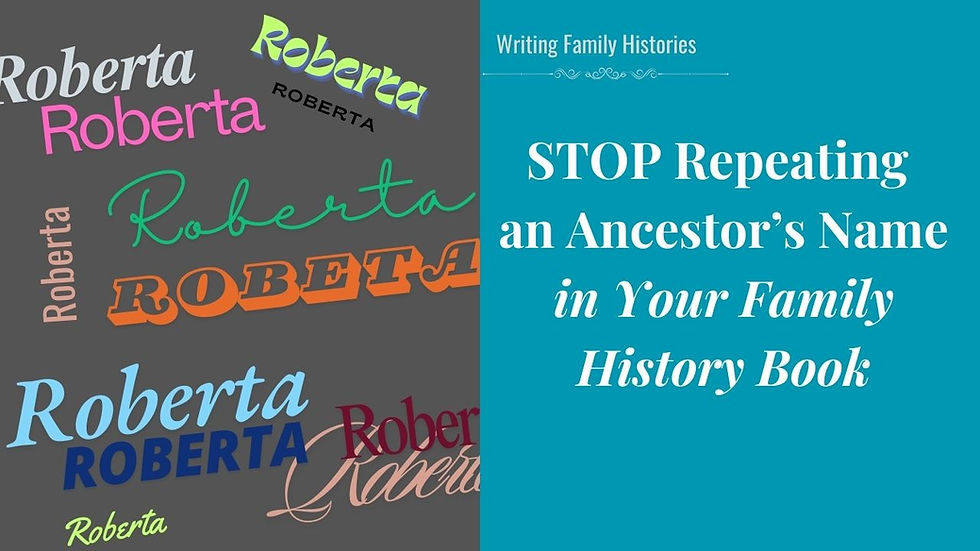Improve Your Family History With These Passive Voice Checkers
- Devon Noel Lee

- Jul 13, 2023
- 3 min read
Updated: Nov 1, 2024

Most genealogists who embark on the journey of writing family histories want to write non-boring family histories. One quick fix to many story-based histories is eliminating passive voice throughout your text.
While this sounds simple, it's actually a bit of a challenge. But thankfully, several tools can spot weak writing and help us make small changes to our manuscripts.
Why is Passive Voice So Bad?
Using passive verbs is a skill taught in my children's grammar program. If passive tense is grammatically correct, why should writers avoid using it?
Andrew Pudewa, author of Teaching Writing: Structure and Style, declares that “the verb can make or break a sentence.”
He suggests banning weak verbs such as get, got, go, went, see, saw, say, and said. They are grammatically accurate but very weak very.
For instance, instead of saying:
John went to church every Sunday.
You'd replace the boring word 'went' with one of the following:
John attended church every Sunday.
John bounced to church every Sunday.
John trudged to church every Sunday.
To better understand boing verbs and how to replace them, pick up a copy of the Student Resource Notebook by the Institute for Excellence in Writing.
Now, as you improve the quality of your verbs, you can still run a foul by how you structure your sentences. Compare the following sentence.
John and Sarah were married by Reverend Howe.
Reverend Howe married John and Sarah.
In the first option, the sentence's subject does not do the action. The reverend marries the couple, but the couple is the subject of the sentence.
In the second option, notice that you'd use fewer words with a clearer meaning because the Reverence does the action.
While passive tense is correct in many instances, the more you can eliminate this in your family story, the more engaging it becomes.
How to Spot Passive Tense Sentences
Once you're in the grammatical editing phase of writing your family history, do a text search for the following words:
have, has, had
is, was, were, are
If an action verb follows these helping verbs, you're frequently staring at passive tense sentences. But, helping verbs do not always indicate passive voice.
Passive Voice Checkers Worth Trying
Since this may be confusing and difficult to spot in a family story of more than 1,000 words, leverage passive voice checkers to lend a hand.
I use Grammarly, and have used it for many years to help myself and my children write better reports and stories.
While Grammarly has a free option, the passive voice checker is only available through the premium plan. Catching passive tense sentences is one feature worth the expense.
Grammarly can work on any website when you're writing. For instance, it will turn on when using Google Docs, Facebook, or other websites where you can type a comment. You will often spot Grammarly suggestions in my videos on Family History Fanatics and Write Your Family History.
When you use passive voice, Grammarly highlights the problem and recommends changing the sentence. However, you’ll need to write these changes yourself.
↪️ Are you looking for more genealogy resources?
Grab a copy of our FREE Genealogy Research and Writing Guides:
This free tool not only highlights and counts your use of passive voice. The goal in many projects is to use two or fewer instances of passive tense. Apparently, it will give you suggestions to avoid wordy sentences and improve your story's readability.
The downside to this free tool is that you must copy your text and paste it into the website tool. But, free doesn't always fit into your natural workflow.
This tool requires you to sign-up for an account to utilize some free tools or invest in a paid subscription. The free and paid option check for passive voice. What's advantageous is that this tool also offers one-click corrections. You can click on the better choice from several options and fix your problem quickly.
It's such a cool tool. I might consider switching from Grammarly to this one.
Finally, another web-based tool does what it says it'll do. After you copy and paste (or upload) text into the analyzer, the tool will highlight when you use passive tense.
There is also the Zombies Test, which you can turn on to check your sentences. This feature makes editing fun when you can summon the zombies.

Additional Writing Improvement Tips
.png)




Comments